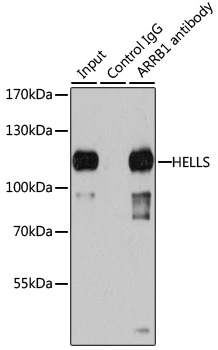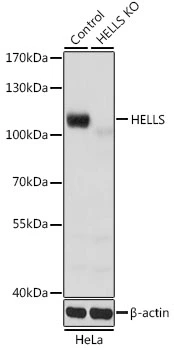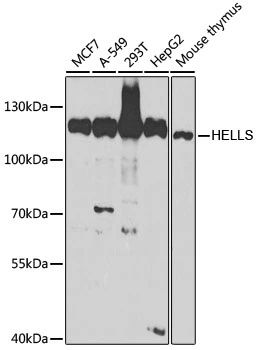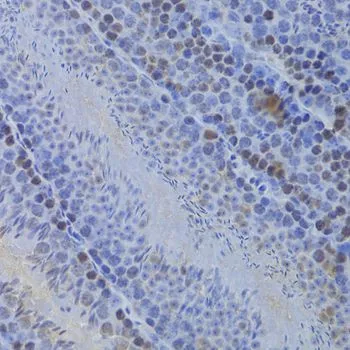
IP analysis of 293T cell lysate using GTX54157 HELLS antibody. Antibody amount : 1microg / 200microg lysate Dilution : 1:1000
HELLS antibody
GTX54157
Overview
- SupplierGeneTex
- Product NameHELLS antibody
- Delivery Days Customer7
- Application Supplier NoteWB: 1:500 - 1:2000. IHC-P: 1:50 - 1:200. IP: 1:50 - 1:200. *Optimal dilutions/concentrations should be determined by the researcher.Not tested in other applications.
- CertificationResearch Use Only
- ClonalityPolyclonal
- Concentration1 mg/ml
- ConjugateUnconjugated
- Gene ID3070
- Target nameHELLS
- Target descriptionhelicase, lymphoid specific
- Target synonymsICF4; LSH; lymphoid-specific helicase; Nbla10143; PASG; proliferation-associated SNF2-like protein; SMARCA6; SWI/SNF2-related, matrix-associated, actin-dependent regulator of chromatin, subfamily A, member 6
- HostRabbit
- IsotypeIgG
- Protein IDQ9NRZ9
- Protein NameLymphoid-specific helicase
- Scientific DescriptionThis gene encodes a lymphoid-specific helicase. Other helicases function in processes involving DNA strand separation, including replication, repair, recombination, and transcription. This protein is thought to be involved with cellular proliferation and may play a role in leukemogenesis. Alternatively spliced transcript variants encoding different isoforms have been identified. [provided by RefSeq, Jan 2014]
- Storage Instruction-20°C or -80°C,2°C to 8°C
- UNSPSC12352203
References
- HELLS Is Negatively Regulated by Wild-Type P53 in Liver Cancer by a Mechanism Involving P21 and FOXM1. Schuller S et al., 2022 Jan 17, Cancers (Basel)Read more



